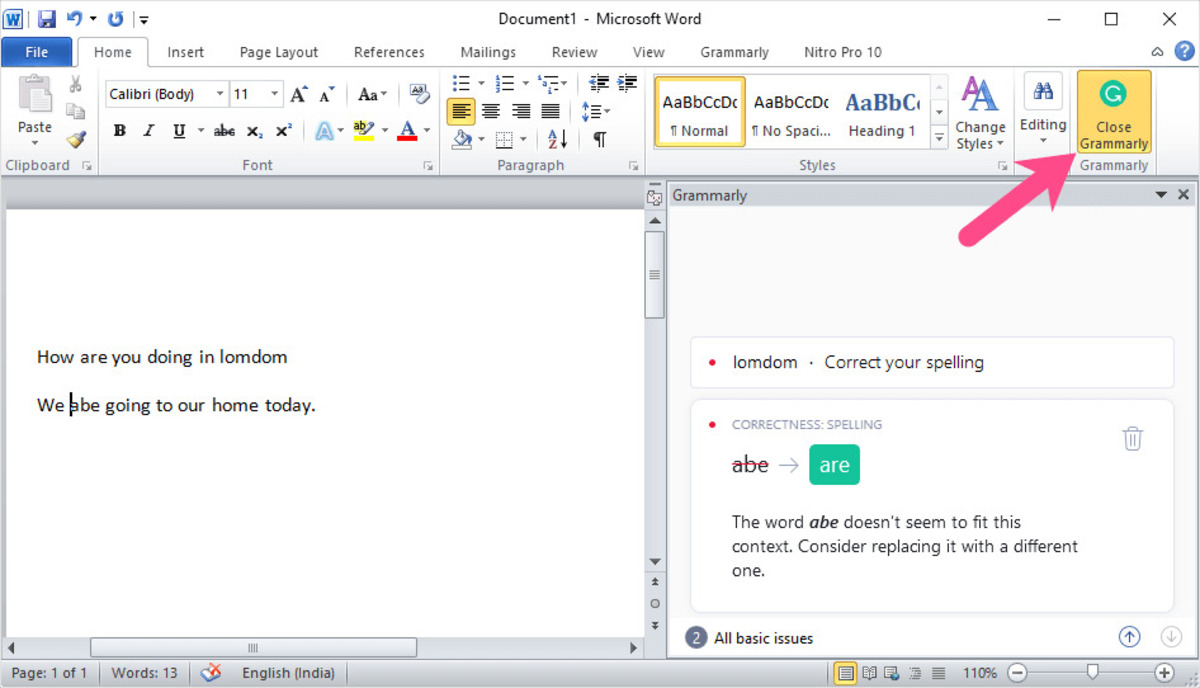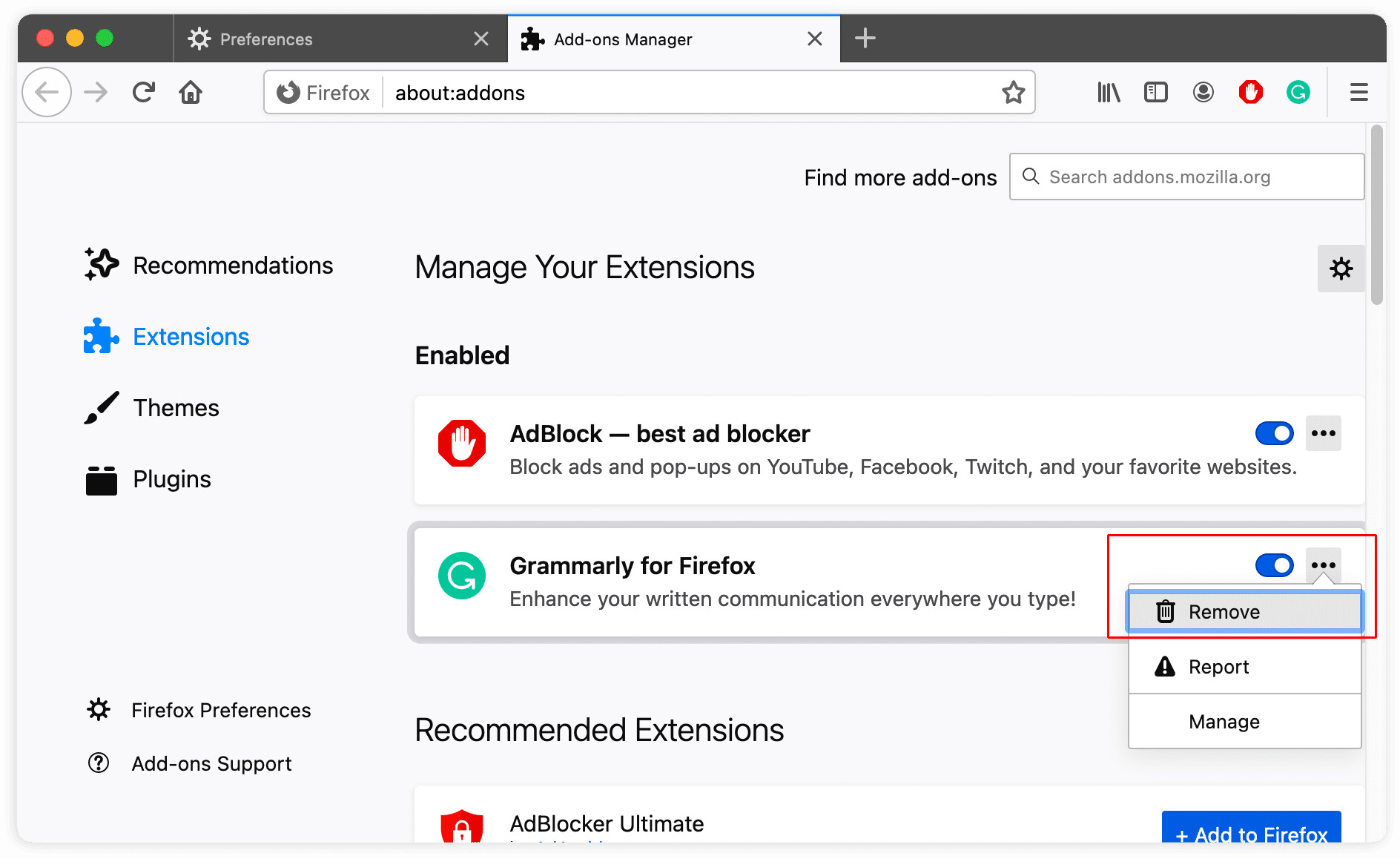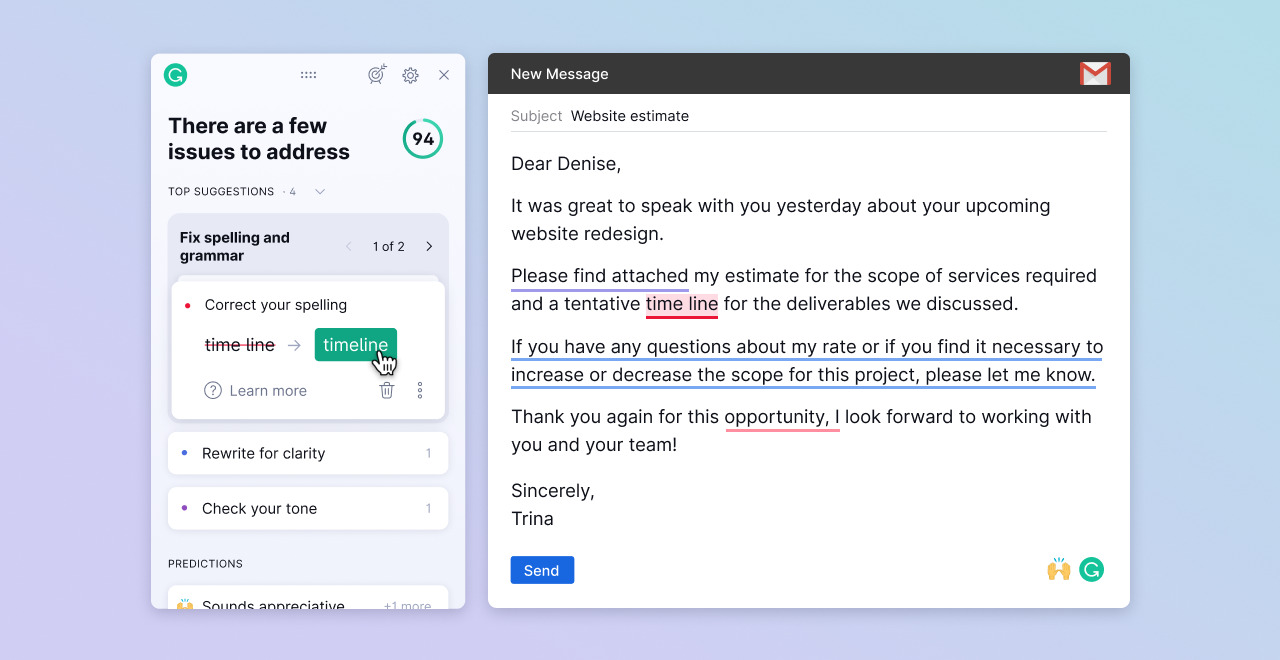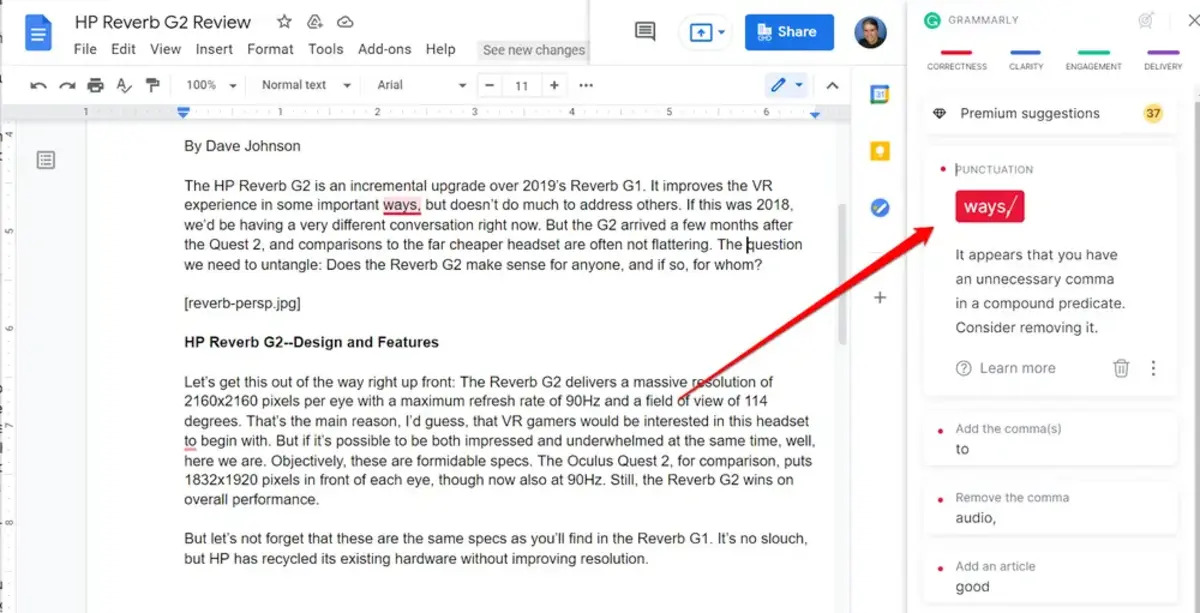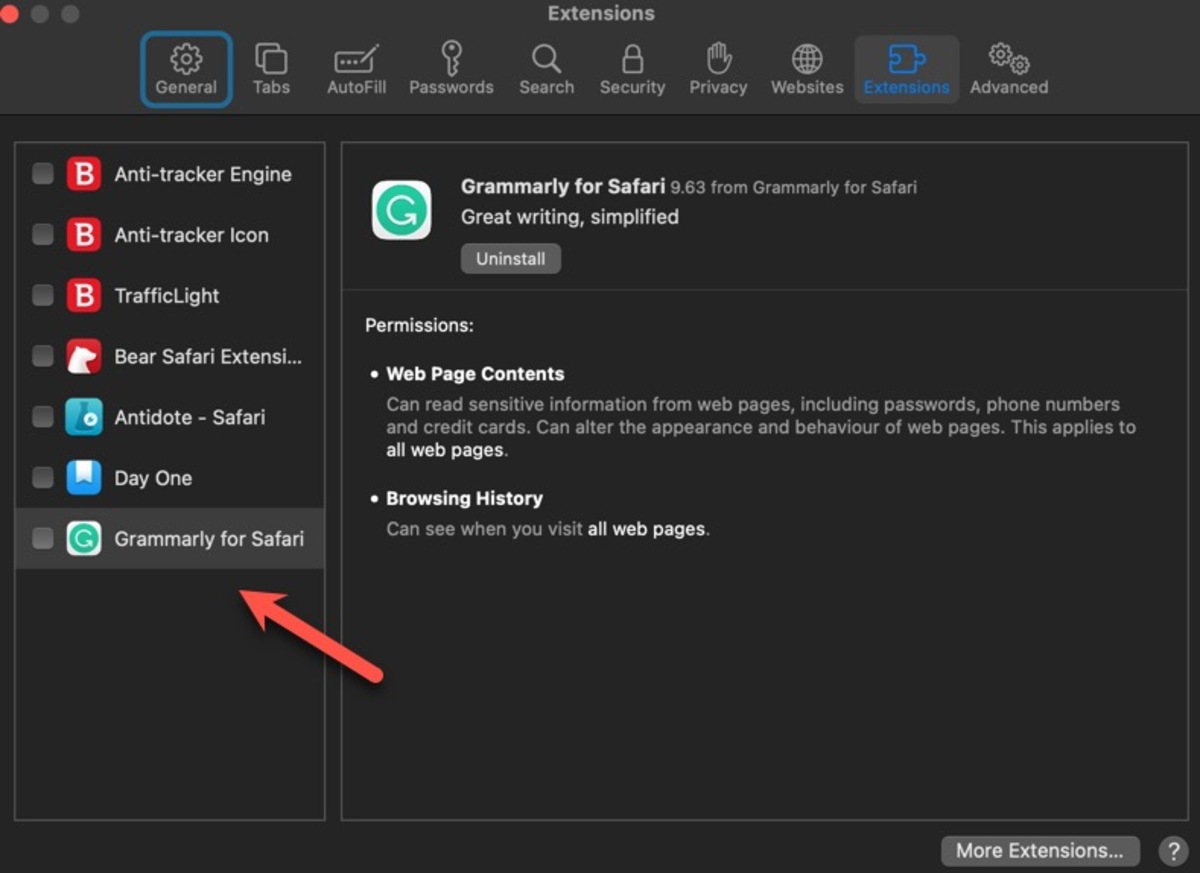Introduction
Welcome to this guide on how to get rid of Grammarly comments in Word! If you frequently use Microsoft Word and the Grammarly writing assistant, you may have come across those pesky comments that Grammarly adds to your documents. While they can be helpful at times, they can also clutter your document and make it difficult to focus on your content.
In this article, we will explain what Grammarly comments in Word are, highlight why you might want to remove them, and provide you with step-by-step instructions on how to do so.
Grammarly is a widely popular writing assistant that helps writers improve the quality and clarity of their writing. It scans your text for grammatical errors, spelling mistakes, punctuation issues, and even offers suggestions for better word choices. When using Grammarly in conjunction with Microsoft Word, it adds comments to your document to provide feedback and suggestions for improvement.
While these comments can be helpful, they can also be distracting or unnecessary, depending on your editing preferences or the nature of your document. For example, you may find the comments cluttering up the page when you’re trying to focus on the overall flow of your writing or formatting your document for publication.
Additionally, if you collaborate with others or share your document with colleagues, clients, or professors, they may not have Grammarly or understand its commenting system. In such cases, it may be more convenient to remove Grammarly comments to streamline the reviewing and editing process.
Now that we understand the purpose and potential drawbacks of Grammarly comments in Word, let’s dive into the different methods you can use to get rid of them. Whether you want to temporarily disable Grammarly for a specific document, manually remove comments, or even use a handy VBA macro for automation, we’ve got you covered.
What are Grammarly comments in Word?
If you’re using Grammarly with Microsoft Word, you might have noticed comments popping up in your document. But what exactly are Grammarly comments in Word?
Grammarly comments are annotations that appear alongside your text to provide suggestions, explanations, or alerts about potential grammar, spelling, punctuation, or style issues. They are designed to help you improve the quality and clarity of your writing. When you install the Grammarly add-in for Word, it automatically starts analyzing your text and adding comments where it detects areas for improvement.
Grammarly comments can be easily identified by their distinctive appearance. They appear as small bubbles in the right margin of your document, containing a brief description of the issue or suggestion. They are color-coded to indicate different types of feedback. For example, red bubbles indicate critical grammar or spelling errors, yellow bubbles indicate style suggestions or clarity improvements, and blue bubbles offer additional information or explanations.
Grammarly comments provide a valuable layer of editorial support, especially for non-native English speakers or those who want to enhance their writing skills. They offer real-time feedback and allow you to make revisions directly within the document. You can accept Grammarly’s suggestions by simply clicking on the comment, applying the recommended change, or ignoring it if you disagree.
However, while Grammarly comments can be helpful, they may not always be necessary or desired. Depending on the context or purpose of your document, you might find them distracting or overwhelming. For instance, if you’re working on a final draft that requires minimal revision or if you prefer to focus on the overall flow and structure of your writing, the comments might hinder your concentration.
Additionally, if you plan to share your document with others who do not have Grammarly or are unfamiliar with its commenting system, the comments might confuse or clutter the document. Removing Grammarly comments can streamline the editing process and facilitate clearer communication with collaborators, clients, or professors.
In the next section, we will discuss the reasons why you might want to consider removing Grammarly comments in Word and explore various methods to accomplish this.
Why remove Grammarly comments?
While Grammarly comments in Word can be beneficial for improving your writing, there are several reasons why you might want to consider removing them from your document.
1. Reducing distractions: Grammarly comments can be distracting, especially when you’re trying to focus on the overall flow or organization of your writing. Removing them can help you concentrate on the content without the visual clutter of the comments.
2. Improving readability: When sharing your document with others, Grammarly comments may take up valuable space and disrupt the visual aesthetics of your document. Removing them can enhance the readability and professionalism of your work.
3. Simplifying collaboration: If you’re working on a document with multiple collaborators who don’t use Grammarly, the comments can create confusion. Removing them can streamline the editing process and ensure clearer communication.
4. Customizing the editing experience: Every writer has their own preferred editing style. Some may prefer to address comments as they arise, while others may want to focus on specific aspects of their writing first. Removing Grammarly comments allows you to tailor the editing experience to your individual preferences.
5. Meeting specific document requirements: Depending on the purpose or guidelines of your document, you may need to remove extraneous elements such as comments. For example, when submitting a manuscript for publication, the presence of Grammarly comments may not be suitable or necessary.
6. Preventing confusion: In some cases, Grammarly comments may not accurately reflect the intended meaning of a sentence or may suggest changes that are unnecessary or inappropriate. Removing the comments can prevent confusion and ensure that your message is conveyed as intended.
Remember, removing Grammarly comments is a personal preference and may not be necessary in every situation. Consider the specific needs of your document, your editing process, and how the presence or absence of comments may impact your writing experience or the perception of your work.
In the following sections, we will explore different methods to remove Grammarly comments in Word, allowing you to choose the approach that best fits your requirements and preferences.
How to remove Grammarly comments in Word
Whether you want to temporarily disable Grammarly for a specific document or permanently remove Grammarly comments, there are several methods you can use. Let’s explore three effective ways to remove Grammarly comments in Word.
Method 1: Disabling Grammarly for Word
If you only want to remove Grammarly comments for a specific document while keeping Grammarly active for other documents or platforms, you can temporarily disable Grammarly for Word. Here’s how:
- Open Microsoft Word and click on the Grammarly tab in the ribbon at the top of the window.
- In the Grammarly pane, click on the Gear icon in the bottom left corner to access settings.
- Select “Disable Grammarly for Word” from the drop-down menu.
By disabling Grammarly for Word, the comments will be hidden in your document, but Grammarly will remain active for other platforms or documents you work on.
Method 2: Clearing Grammarly comments manually
If you want to permanently remove Grammarly comments from a document and ensure they don’t appear again, you can remove them manually. Here’s how:
- Open the document in Microsoft Word.
- Review each comment individually by clicking on it.
- Click on the “Delete” button or right-click on the comment and select “Delete Comment.”
- Repeat these steps for each Grammarly comment in the document.
This method requires manual effort, but it allows you to have complete control over which comments to remove from the document.
Method 3: Using a VBA macro to remove Grammarly comments
If you have a large document with multiple Grammarly comments or want to automate the removal process, you can use a VBA macro in Microsoft Word. Here’s how:
- Open your document in Microsoft Word.
- Press “Alt + F11” on your keyboard to open the Visual Basic for Applications (VBA) editor.
- In the VBA editor, navigate to “Insert” and select “Module” to create a new module.
- Paste the following VBA code into the module:
vba
Sub RemoveGrammarlyComments()
Dim comment As Comment
For Each comment In ActiveDocument.Comments
If comment.Author = “Grammarly” Then
comment.Delete
End If
Next comment
End Sub
- Close the VBA editor and return to your Word document.
- Press “Alt + F8” to open the Macros dialog box.
- Select the “RemoveGrammarlyComments” macro from the list and click “Run.”
This VBA macro will search for Grammarly comments in the document and delete them automatically.
Choose the method that suits your needs and preferences to remove Grammarly comments from your Word document. Once the comments are removed, you can enjoy a cleaner and more streamlined editing experience.
Method 1: Disabling Grammarly for Word
If you want to remove Grammarly comments for a specific document while keeping Grammarly active for other documents or platforms, you can disable Grammarly for Word. This method allows you to temporarily hide Grammarly comments in your document. Follow these steps to disable Grammarly for Word:
- Open Microsoft Word and navigate to the Grammarly tab in the ribbon at the top of the window.
- In the Grammarly pane, locate the Gear icon located in the bottom left corner and click on it. This will open the settings menu.
- From the settings menu, select “Disable Grammarly for Word” from the drop-down list.
By disabling Grammarly for Word, you effectively hide the Grammarly comments in your document. Grammarly will still remain active for other platforms or documents you work on.
This method allows you to have more control over when Grammarly comments appear in your document. You can choose to enable or disable Grammarly depending on your specific editing needs for each document.
It’s important to note that disabling Grammarly for Word only affects the document you’re currently working on. If you open a new document or a different file, Grammarly will be enabled by default unless you choose to disable it again.
Disabling Grammarly for Word provides a convenient way to remove Grammarly comments without permanently altering your Grammarly settings. It’s an ideal option if you want to focus on the content without the distraction of comments or if you’re collaborating on a document with someone who doesn’t use Grammarly.
Now that you know how to disable Grammarly for Word, let’s explore another method for removing Grammarly comments in Word by clearing them manually.
Method 2: Clearing Grammarly comments manually
If you want to permanently remove Grammarly comments from a document and ensure they don’t appear again, you can clear them manually. This method allows you to have complete control over which comments to remove from the document. Follow these steps to clear Grammarly comments manually:
- Open the document in Microsoft Word that contains the Grammarly comments you want to remove.
- Review each comment individually by clicking on it. The comment will be highlighted, and its content will appear in a callout box.
- To remove a comment, click on the “Delete” button located in the comments pane or right-click on the comment and select “Delete Comment”.
- Repeat these steps for each Grammarly comment in the document that you want to remove.
By manually deleting Grammarly comments, you can ensure that they are permanently removed from your document. This method gives you the flexibility to choose which comments to keep or remove based on your editing preferences and the relevance of the suggestions provided by Grammarly.
Keep in mind that once you delete a Grammarly comment, it cannot be recovered. Therefore, it’s a good practice to carefully review each comment before deciding to remove it.
Clearing Grammarly comments manually is a straightforward method that allows you to customize the editing experience according to your specific needs. It’s particularly useful if you want to have full control over the presence of comments in your document or if you prefer to address the suggestions provided by Grammarly on a case-by-case basis.
Now that you know how to manually clear Grammarly comments, let’s explore another method using a VBA macro to automate the removal process in Word.
Method 3: Using a VBA macro to remove Grammarly comments
If you have a large document with numerous Grammarly comments or want to automate the removal process, using a VBA macro in Microsoft Word can be a time-saving solution. This method allows you to write a script that searches for and deletes Grammarly comments automatically. Follow these steps to use a VBA macro to remove Grammarly comments:
- Open your document in Microsoft Word that contains the Grammarly comments you want to remove.
- Press “Alt + F11” on your keyboard to open the Visual Basic for Applications (VBA) editor.
- In the VBA editor, click on “Insert” and select “Module” to create a new module.
- Paste the following VBA code into the module:
vba
Sub RemoveGrammarlyComments()
Dim comment As Comment
For Each comment In ActiveDocument.Comments
If comment.Author = “Grammarly” Then
comment.Delete
End If
Next comment
End Sub
- Close the VBA editor and return to your Word document.
- Press “Alt + F8” on your keyboard to open the “Macros” dialog box.
- Select the “RemoveGrammarlyComments” macro from the list and click “Run” to execute the macro.
When you run the macro, it will search for all Grammarly comments in the document and delete them automatically. This allows you to remove multiple comments in one go, saving you time and effort.
Using a VBA macro to remove Grammarly comments is particularly useful if you have a large document with numerous comments or if you frequently work with documents containing Grammarly comments that need to be removed quickly.
Remember to review your document after running the VBA macro to ensure that the correct comments have been removed. It’s also worth noting that this method permanently deletes the comments, so make sure to create a backup of your document if you want to preserve a copy with the comments intact.
Now that you know how to use a VBA macro to remove Grammarly comments, you can streamline the process of cleaning up your document and enjoy a more polished final product.
Conclusion
Grammarly comments can provide valuable feedback and suggestions for improving your writing in Microsoft Word. However, there are situations where you may want to remove these comments to enhance readability, facilitate collaboration, or customize your editing experience. By following the three methods outlined in this guide, you can effectively remove Grammarly comments from your Word documents.
Method 1 involves temporarily disabling Grammarly for Word, allowing you to hide Grammarly comments for a specific document while keeping the feature active for others. This method is useful when you want to focus on the content without distractions or collaborate with individuals who do not use Grammarly.
Method 2 requires manually clearing Grammarly comments from your document. This method gives you complete control over which comments to remove, allowing you to carefully evaluate each suggestion and make informed decisions about revisions. It is ideal if you prefer a more hands-on approach or need to selectively remove specific comments.
Method 3 involves using a VBA macro to automate the removal of Grammarly comments. This method is convenient for documents with a large number of comments, as it saves time and effort by automatically searching for and deleting Grammarly comments. It is especially beneficial if you frequently work with documents containing multiple comments or need to remove comments in bulk.
Remember to exercise caution and review your document after removing Grammarly comments to ensure the desired changes have been made. It’s also a good practice to create a backup copy of your document before making any modifications.
By utilizing these methods, you can tailor your editing process to meet your specific needs and preferences, resulting in cleaner, more polished documents. Whether you want to temporarily disable Grammarly, manually clear comments, or use a VBA macro, removing Grammarly comments in Word helps you maintain control over the editing process and create documents that are free from distractions.







